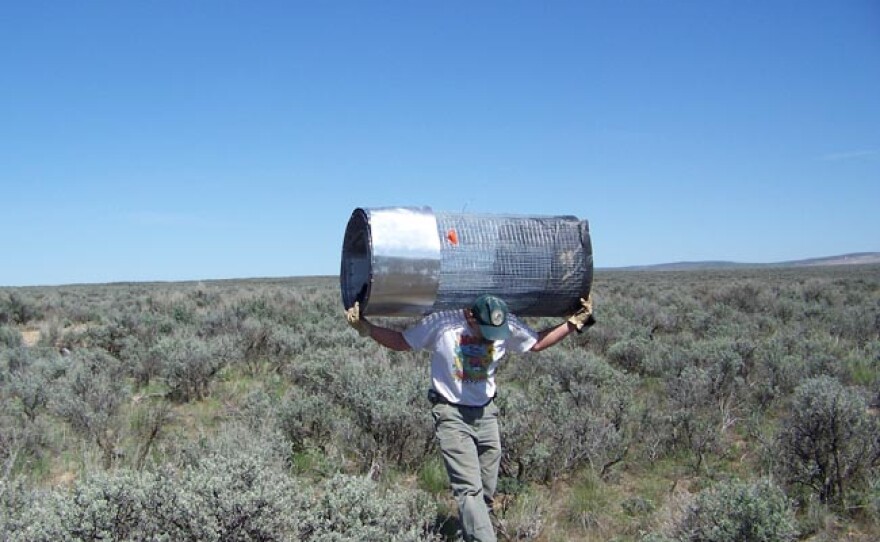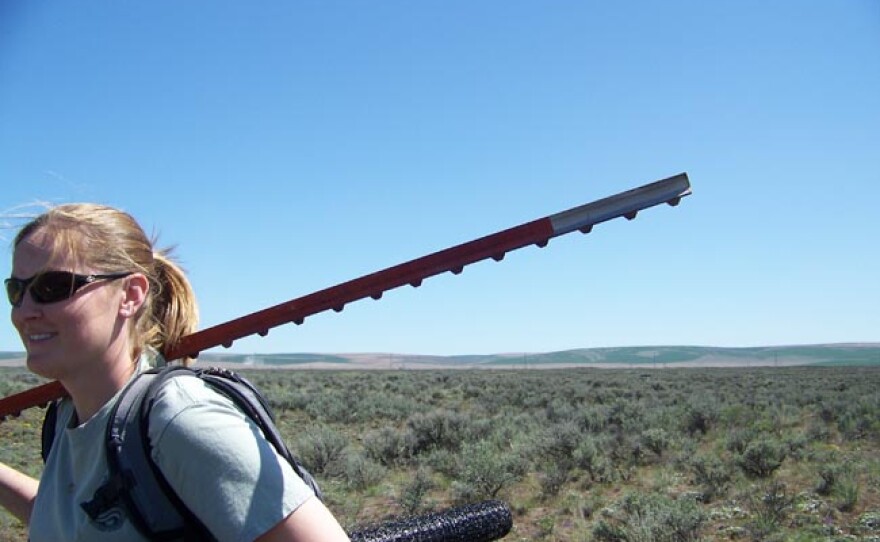http://stream.publicbroadcasting.net/production/mp3/kplu/local-kplu-968530.mp3
In north central Washington, scientists are trying once again to reintroduce a tiny endangered rabbit species into a big, predator-ridden landscape. Next week, scientists plan to release about 100 young pygmy rabbits, each one the size of a tennis ball.Sun-scorched, dusty and parched, a half-dozen scientists and workers labor under the noon sun as if life depended on it. And it does. The team is hauling hefty supplies miles deep into sagebrush country north of Ephrata. They're here for a bite-sized animal on hoppity legs.
Penny Becker is the research scientist leading the reintroduction of pygmy rabbits.
"We're building a temporary structure with small mesh wire, which includes some sage brush for cover, grasses and an artificial burrow made out of a drainage tube," says Becker.
The month-old rabbits are teeny-tiny, with short ears, beady black eyes and twitching noses. This turf is home to hawks, badgers, weasels, coyotes and owls. To them pygmy rabbits are like chicken nuggets.
So when fish and wildlife agents released 20 bunnies in 2007, they only lasted a few months. This time the reintroduction includes about 100 or so.
Becker says she hopes that these cages will help them get established even though she knows this truth: Rabbits are made to be eaten.
"That's why rabbits breed like rabbits. They pump out a lot of young so when a lot of them get eaten, there are some left over to breed in the next year. But when you start off with such a small number, it's difficult to get over that hump to have enough to breed over the next year," Becker adds.
She hopes some of these pygmy rabbits can hunker down and survive.








